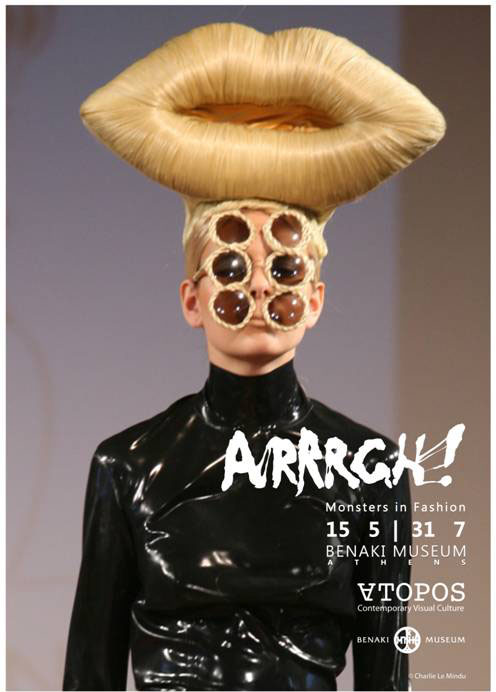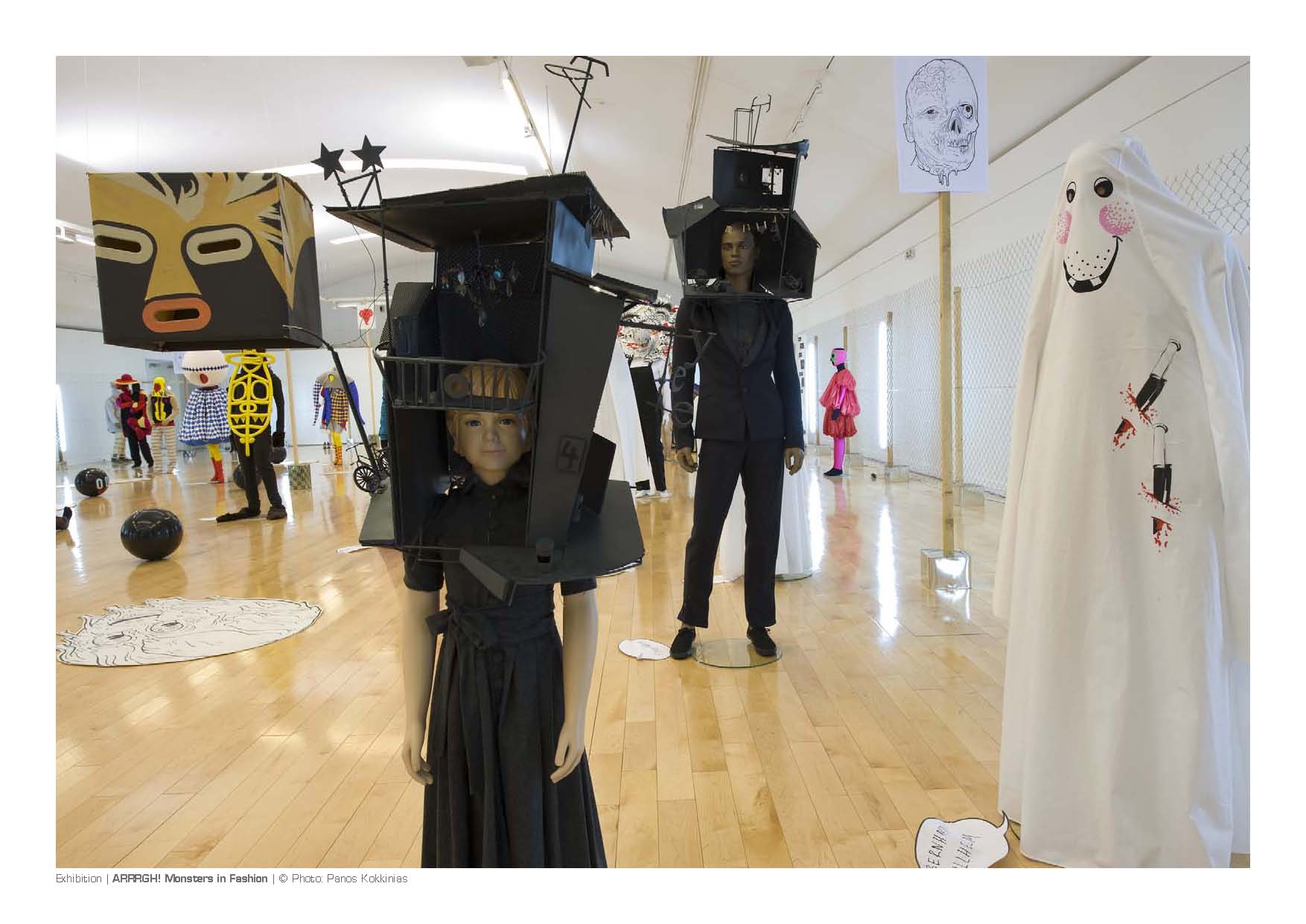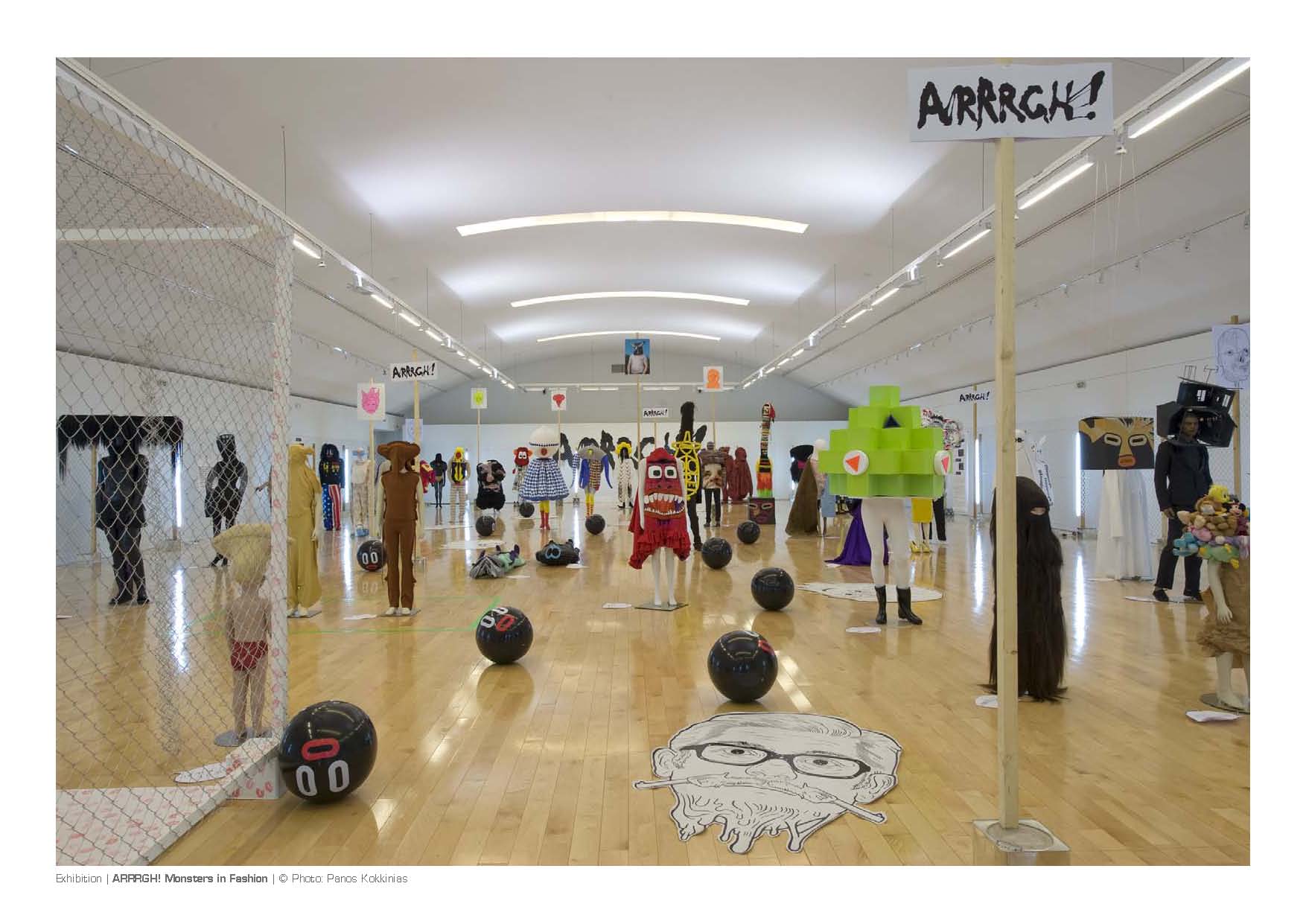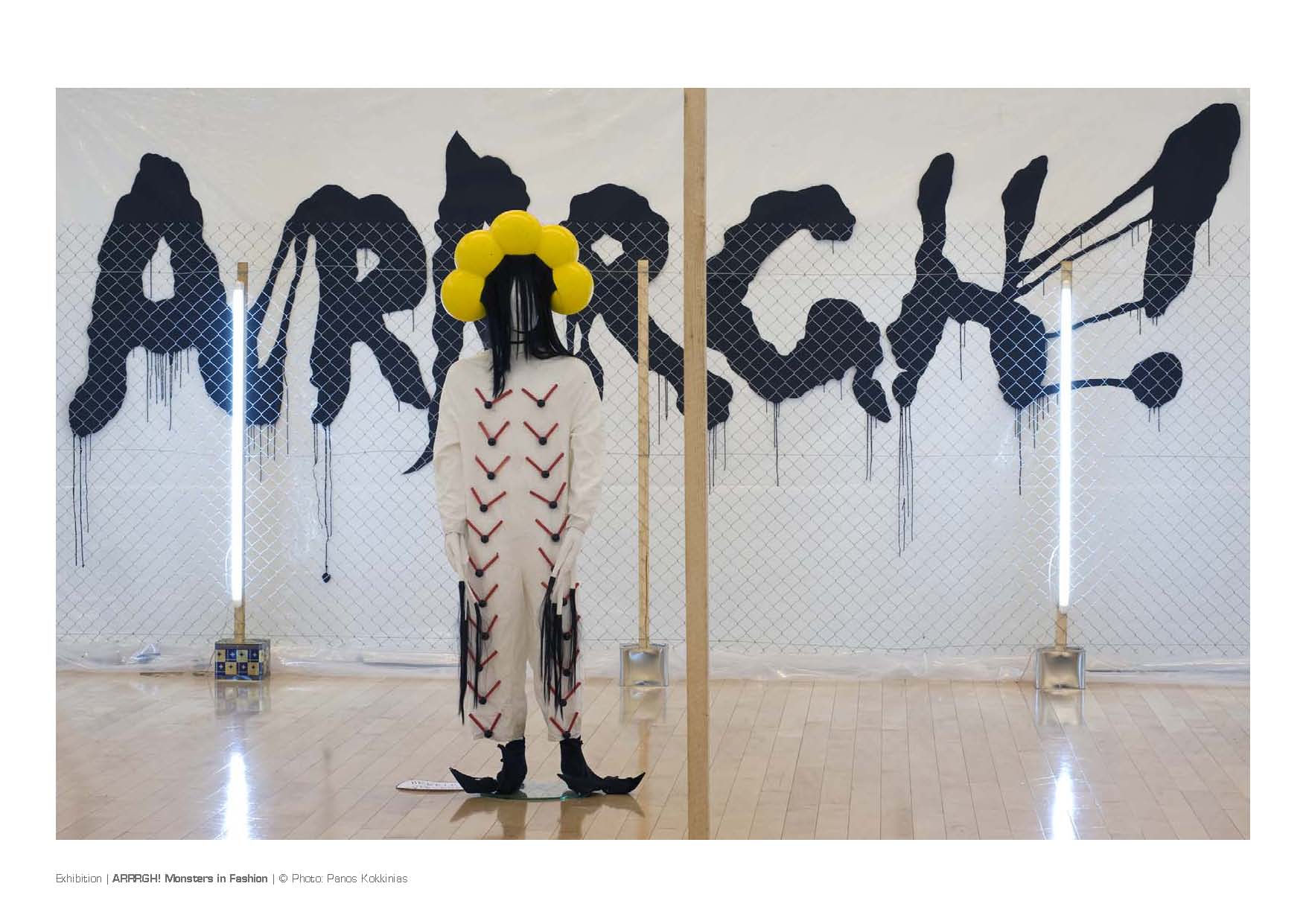Fur Muff, 2009
This idea of other, of transformation or metamorphism is part of a literature canon dating back to Ovid’s great poem Metamorphoses. Marina Warner suggests that this tradition of fiction is integral to not only feeding our imaginations but functions also as part of our understanding of theories of self and models of consciousness.(2) She explains, using the example of the double or monstrous alter ego, that such metamorphosing potential works paradoxically as not only a threat to personality, but the double “also solicits hope and dreams for yourself, of a possible becoming different while remaining the same person, of escaping the bounds of self.” (3) Warner further suggests that metamorphoses happen at points of intersections, between boundaries. Metamorphosis is engendered by border-line conditions; it is cultivated in-between. If margins and borders are conducive to such transformations, then clothing may be an especially productive site. As a kind of transitional frontier, it marks the boundary between self and non-self through its physical and psychological operations. Clothing can embody powers of metamorphosis; it can be a tool for ‘becoming something else.’ The transformations that dress enacts may be large or small, fantastical or ordinary, monstrous, disciplined or liberating. I thought these were useful ideas for exploring the visible elements of femininity in wilderness landscapes and the complexities of my relation to the concept of nature. A lot has been written about clothing in an urban context and very little about clothing in the wilderness landscape.
“Expansive! now there's a word I love, it spreads all over the beating heart of the romantic sublime, defines it, now you're talking my language,” writes my friend Jane who is an art historian and writer and a recent collaborator. “To me, transformation is more idea than phenomenology and I just couldn't feel it - though I could see it - wonder what that says about our different approaches?.....and the clearing, how can that expand?” she writes. Jane and I are still discussing a project we undertook together where we travelled to Paradise Valley a remote spot in the isolated central South Island of New Zealand. Together we went; Jane with her moleskin notebooks, pencils and recording devices and myself carrying a lot of clothes and a camera. We went to see if we could put into visualisation a feminine sublime in a New Zealand wilderness context and I was also experimenting to see if I could transform into something ‘other’ using clothing and exploring what a female pleasure in looking might feel like.
In Paradise Valley we spent seven days in a small rodent filled one room hut with no power or running water surrounded by beech trees and huge mountains. The nights were so thick and dark that we peed only metres from the door in the dewy grass. We had gone with the intention of walking but instead we spent our week there sort of trapped, or at least not leaving a small clearing that the trees outside our hut opened onto. In Paradise Valley Jane asked me what I thought about the concept of the self in relation to feeling. I had been reading Barbara Vinken and thinking around her idea that the division between being and appearance constitutes one of the major conceptual articulations of fashion. I was thinking about what ‘being’ actually means, looks like or feels like. I decided that it was feeling that was important. I can’t imagine a self without feeling. Feeling the wind and enjoying the feeling of feeling. I was and still am curious to see if looking could be an agent for feeling.
My desire to effect what artist Roni Horn calls ‘an intensification of being’ is an ordinary human goal to be sure. Roni Horn also travels to ‘wilderness’ locations in Iceland for her projects. She is hunting for a space outside gender somewhere where she says pronouns don’t detain her. I dress up in a hyper-expressive collection of mostly dresses and I think I am hunting for a heightened sense of being, of feeling pleasure as a female – in fact a middle aged woman in the bush. My clothed body moves through and sits still amongst the beech trees and alpine tussock grasses. In the process of performing with these elements, I strive for a union between my body, textile and natural world and, of course failing, I try again and leave behind a trail of art works. It is in these works of video and photos and writing that I seem to be reflected back at myself as part landscape, part animal and part garment.
Jane asked me why I chose to take the clothes I did to Paradise Valley. Soft pinks, pale blues and white against green that I find sensual. I thought a lot about the colour of the clothes I took and how they would look against the Southern Fiordland forest and about their textures. I chose pink trousers and a thick satin white skirt and red Yoji dancing shoes. A pale blue sequined tutu for twirling in and an old petticoat to add volume and rustle to the skirts. A possum fur muff for the pleasure of feeling fur - sticking my hands into fur. A hooded jacket and a thick cable knit jersey for warmth and layers. I like looking and feeling warm and lumpy. A dress I had made with pink ears and a tail to explore becoming animal in. My beautiful Martin Margiela long, three- fingered wool gloves. And finally my old man black wool pants. I had worn them a lot; they’re too big, with a huge baggy bum; I know they look bad but I feel good looking bad. And they’re warm. I filled our hut with my clothes and laid out they were an extraordinary mixture of colours and textiles with links to the past and potential possibilities.
Barbara Vinken has called fashion a poetological activity that thematises itself and has performative power, one that represents a relationship between the designer and those who wear the clothes. (4) The performative power of clothing interests me and here I see a connection or blurring of boundaries with art. Both have the potential to shift and question how we see ourselves in relation to our environments – or to what we can become. In my brown dress with a tail I don’t become a tailed animal and the gap between me and tailed animals is wide. But I do feel a huge respect for animals and like them I need also the forests and clean air to live.




















